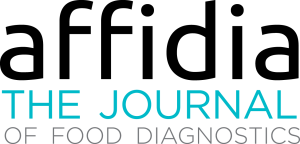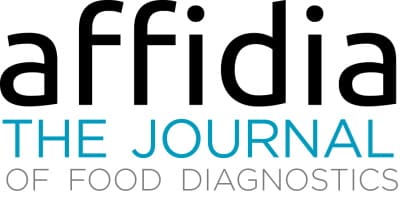Towards the development of food allergen reference materials
Standardization of methods could soon be easier.
Introduction Effective food allergen risk assessment and food allergen management are important to protect allergic consumers and to comply with allergen labeling regulations. Such approaches require reliable analytical tools for the detection of allergens in food. Due to the nature of the analytes and their susceptibility to various processing effects, reliability and comparability of results have posed a great challenge. Both reference methods and reference materials are urgently needed to assure the quality, reliability and comparability of analytical results obtained with different methods. Being an important component of this analytical quality assurance, reference materials contribute to reliable and accurate results. Ensuring the correctness of analytical results is crucial to laboratories because incorrect results may trigger decisions that can cause economic damage (over-estimation, producer’s risk) or pose a risk to public health (under-estimation, buyer’s risk).
The use of reference materials Validated reference materials/ quality control materials and certified reference materials are indispensable for: – Method development – Method calibration – Calibration of instruments – Validation of methods – Method verification – Proficiency testing – Process control and quality assurance in laboratory routine – Required use by ISO/IEC 17025 The quality of reference materials is critical for accuracy and comparability of analysis results. Reference materials must be sufficiently homogenous, stable and traceable. Usually extensive material characterisation and testing for homogeneity and stability of the material precede the availability of reference materials. Ideally a certified reference material (CRM) shall be used, which has been validated by accredited institutions and is subject to strict quality testing. Certified reference materials usually come with a certificate with information on the methods used for validation/assigning a value, the measurement uncertainty and traceability of the numerical value of the analyte’s concentration in the material or the analyte’s purity. According to ISO/IEC 17025, accredited laboratories are required to use certified reference material. At this point the currently available knowledge base and methodological abilities do not allow the certification of food allergen reference materials according to international standards requirements. However, for the currently available internationally validated materials, the international task force led by MoniQA Association is discussing appropriate procedures for the certification of the offered food allergen reference materials according to ISO Standards.
Towards reference materials for allergens The availability of reference materials for allergens in food would offer the possibility of the harmonization, standardization and and calibration of corresponding methods to achieve international traceability, i.e. world-wide comparability, of such measurement results. Furthermore, food allergen reference materials could offer the basis for further development and production of antibodies and detection systems. What makes a food allergen reference material in the end is its use and a general agreement as an internationally accepted reference. At the moment there is no such material that has earned the merits of an internationally accepted reference. Noneth
Introduction Effective food allergen risk assessment and food allergen management are important to protect allergic consumers and to comply with allergen labeling regulations. Such approaches require reliable analytical tools for the detection of allergens in food. Due to the nature of the analytes and their susceptibility to various processing effects, reliability and comparability of results have posed a great challenge. Both reference methods and reference materials are urgently needed to assure the quality, reliability and comparability of analytical results obtained with different methods. Being an important component of this analytical quality assurance, reference materials contribute to reliable and accurate results. Ensuring the correctness of analytical results is crucial to laboratories because incorrect results may trigger decisions that can cause economic damage (over-estimation, producer’s risk) or pose a risk to public health (under-estimation, buyer’s risk).
The use of reference materials Validated reference materials/ quality control materials and certified reference materials are indispensable for: – Method development – Method calibration – Calibration of instruments – Validation of methods – Method verification – Proficiency testing – Process control and quality assurance in laboratory routine – Required use by ISO/IEC 17025 The quality of reference materials is critical for accuracy and comparability of analysis results. Reference materials must be sufficiently homogenous, stable and traceable. Usually extensive material characterisation and testing for homogeneity and stability of the material precede the availability of reference materials. Ideally a certified reference material (CRM) shall be used, which has been validated by accredited institutions and is subject to strict quality testing. Certified reference materials usually come with a certificate with information on the methods used for validation/assigning a value, the measurement uncertainty and traceability of the numerical value of the analyte’s concentration in the material or the analyte’s purity. According to ISO/IEC 17025, accredited laboratories are required to use certified reference material. At this point the currently available knowledge base and methodological abilities do not allow the certification of food allergen reference materials according to international standards requirements. However, for the currently available internationally validated materials, the international task force led by MoniQA Association is discussing appropriate procedures for the certification of the offered food allergen reference materials according to ISO Standards.
Towards reference materials for allergens The availability of reference materials for allergens in food would offer the possibility of the harmonization, standardization and and calibration of corresponding methods to achieve international traceability, i.e. world-wide comparability, of such measurement results. Furthermore, food allergen reference materials could offer the basis for further development and production of antibodies and detection systems. What makes a food allergen reference material in the end is its use and a general agreement as an internationally accepted reference. At the moment there is no such material that has earned the merits of an internationally accepted reference. Noneth
Download content now





















